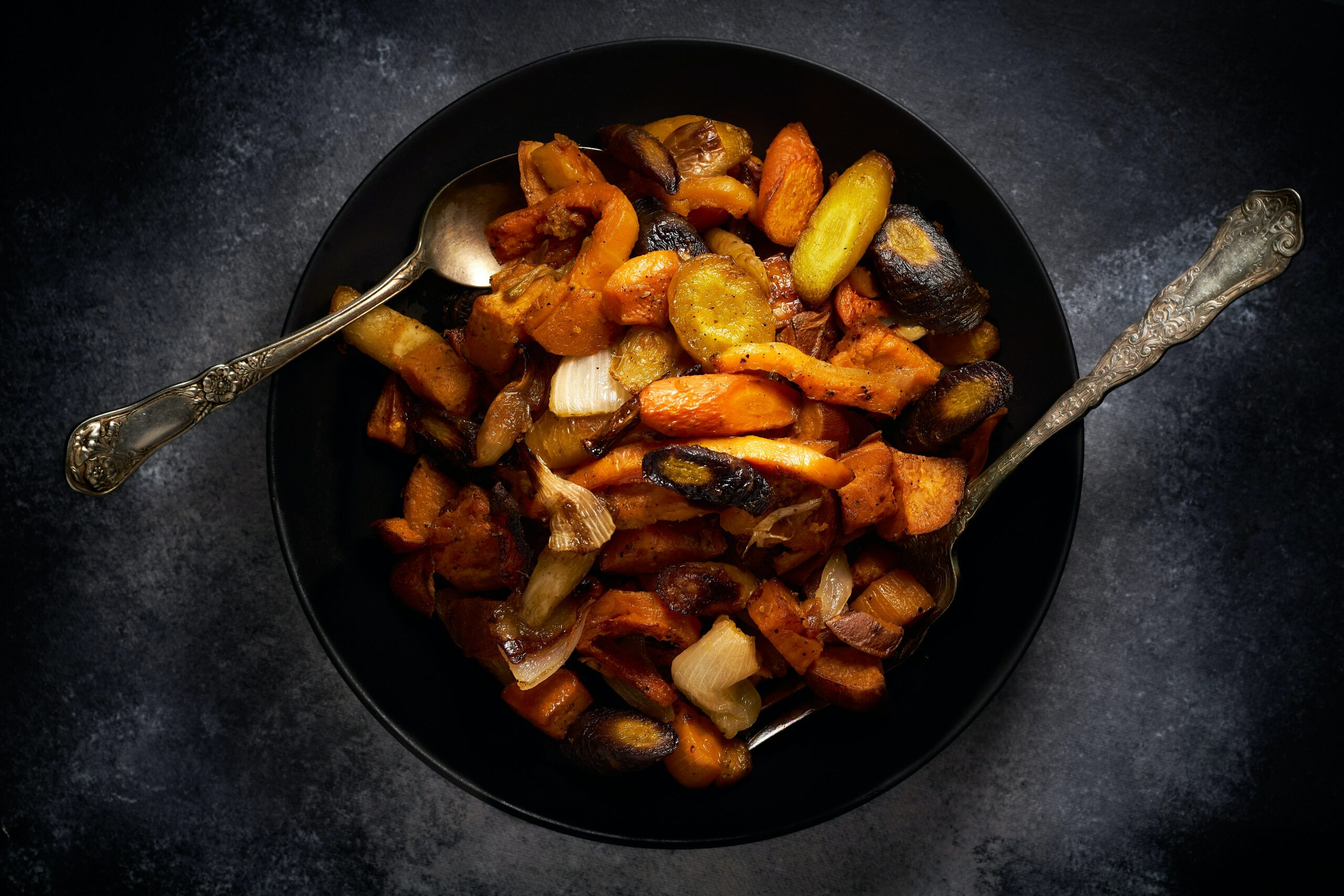
Your Go-To Recipe for Cozy Winter Evenings
Hearty Vegan Pot Roast is the epitome of winter comfort food, providing a warming and satisfying centerpiece to any meal. This dish takes a classic favorite and gives it a plant-based twist, offering a compassionate and healthy option for those chilly evenings. Made with a rich blend of root vegetables, savory seasonings, and meaty alternatives like jackfruit or seitan, it captures the essence of the traditional dish without any animal products.
Many find that a vegan pot roast can be just as fulfilling as its meat-based counterpart. It’s a versatile recipe designed to please a crowd, making it a perfect choice for family dinners, holiday gatherings, or simply a cozy night in. The blend of tender vegetables and robust flavors simmered together create a delectable gravy that envelops each ingredient in a hug of homely goodness.
As they tuck into this hearty vegan pot roast, diners often feel the embrace of familiar comfort food while still enjoying a meal that aligns with a plant-based lifestyle. Everyone around the table, regardless of their dietary preferences, can appreciate the depth of flavor and the feeling of satisfaction that comes with a well-prepared pot roast. This dish stands as a testament to the possibility of tradition and innovation coexisting deliciously on the dinner plate.
Essentials of Vegan Pot Roast
Creating a hearty vegan pot roast involves choosing the right mix of vegetables, a substantial plant-based protein, and layering in rich flavors and aromas for a truly comforting classic.
Choosing the Right Vegetables
One must select vegetables that will hold up well during the cooking process and contribute to the dish’s hearty texture. Root vegetables are an excellent choice. Here are some specific options:
- Potatoes: Provide substance and a creamy texture when cooked.
- Carrots: Add sweetness and a satisfying bite.
- Onion: Offers foundational flavor.
Other vegetables to consider include parsnips, turnips, and sweet potatoes.
Selecting a Plant-Based Protein Source
A satisfying vegan pot roast needs a substantial protein at its core. Jackfruit is a popular option due to its meaty texture and ability to absorb flavors. Seitan, made from vital wheat gluten, is another excellent choice because of its firmness and versatility. Additionally, many recipes will include:
- Mushrooms: Especially varieties like portobello, known for their meaty texture.
Creating Rich Flavor and Aroma
To achieve the depth of flavor associated with traditional pot roast, one must carefully layer seasonings and use cooking techniques to develop savory notes. The process generally includes:
- Garlic: For aromatic depth.
- Olive oil and vegan butter: To enrich the dish.
- Salt and pepper: As the basic seasoning framework.
- Spices: Often including rosemary, thyme, or bay leaves for complexity.
One can also employ browning of the protein and vegetables in olive oil to introduce a caramelized flavor, often enhanced with soy sauce or vegan Worcestershire sauce.
Preparing the Pot Roast
Making a hearty vegan pot roast involves specific cooking methods, layering ingredients to build flavor, and creating a thick, savory gravy. The process is straightforward, but attention to detail can elevate the dish.
Cooking Techniques and Equipment
For cooking a vegan pot roast, one can use a slow cooker for convenience or a Dutch oven for a more traditional approach. Both methods allow for slow cooking, which is essential for melding flavors and tenderizing plant-based proteins. Preheat the slow cooker or Dutch oven before adding ingredients to ensure even heat distribution.
Layering Ingredients and Flavors
Begin by sautéing robust vegetables like onions and garlic, which provide a flavorful foundation. Then, add the vegan protein—often seitan or jackfruit—with dry seasonings to allow the flavors to penetrate deeply. Incorporating tomato paste and vegan Worcestershire sauce adds richness, while red wine gives depth (ensure the wine is vegan-friendly). Layer the ingredients with care, starting with those that take longest to cook.
- Dry Seasonings: salt, garlic powder, black pepper…
- Wet Ingredients: broth, Worcestershire sauce, red wine…
Carefully pour in the vegetable broth, ensuring it spreads across all ingredients, which will help bring out their natural flavors.
Thickening and Enhancing the Gravy
Creating a thick gravy is achieved by using cornstarch or flour as a thickening agent. Mix the thickener with a small amount of broth to create a slurry before stirring into the pot to prevent lumps. Depending on personal preference, the gravy can be enhanced with a splash more red wine, a spoonful of tomato paste, or an extra drizzle of vegan Worcestershire sauce, all while adjusting the seasoning to taste. When adding the slurry, ensure the pot is simmering gently to encourage even thickening of the gravy.
Serving and Pairing
A Vegan Pot Roast serves as a centerpiece for a hearty, comforting meal, perfect for chilly winter evenings or special holiday dinners. When one serves this cozy dish, the accompaniments and the presentation can elevate the meal from simple to spectacular, wrapping each bite in a warm embrace of flavors and textures.
Accompaniments and Side Dishes
- Rice: A fluffy bed of rice can capture the rich gravy, making each spoonful a perfect blend of savory and satisfying comfort.
- Mashed Potatoes: Creamy mashed potatoes are a classic choice, pairing beautifully with the robust flavors of the pot roast.
- Roasted Vegetables: Add color and variety with an array of roasted vegetables, such as carrots, parsnips, or Brussels sprouts.
- Salad: A light, crisp salad balances the meal, introducing a refreshing crunch.
Presentation and Garnishing Tips
- Platter Presentation: Serve the pot roast on a large platter surrounded by the side dishes to showcase the abundance of the meal.
- Garnishing: Fresh herbs like rosemary or thyme add a pop of color and a fragrant touch to the dish.
- Bold, bright vegetables cut in uniform sizes not only enhance the taste but also make the presentation more visually appealing.
Storing and Reheating Tips
After enjoying a delightful vegan pot roast, proper storage ensures that they can savor it again without compromising quality or safety. When storing leftovers, they should aim to place the roast in an airtight container within two hours of cooking to prevent bacterial growth. It can be stored in the refrigerator for up to 3-4 days.
For those who prefer meal prep, the vegan pot roast can easily become a part of their vegan meal plan. They can portion the leftovers into single servings and store them in containers, which makes reheating throughout the week both convenient and efficient.
When it comes to reheating, they have a couple of options:
- Oven: Preheat their oven to 350°F (175°C). Place the pot roast in an oven-safe dish, cover it with foil to retain moisture, and heat it for about 25-30 minutes, or until thoroughly warm.
- Microwave: For a quicker option, they can microwave it on high for about 2-3 minutes, pausing halfway to stir (if possible) for even warmth.
- Stovetop: They can also add the pot roast to a pan over medium heat with a splash of water or vegetable broth. Cover the pan and stir occasionally until heated through.
It’s important to ensure that the pot roast is reheated to an internal temperature of 165°F (74°C) for food safety. Additionally, they should only reheat it once, as multiple reheating cycles can degrade the flavor and texture of the dish.







